-
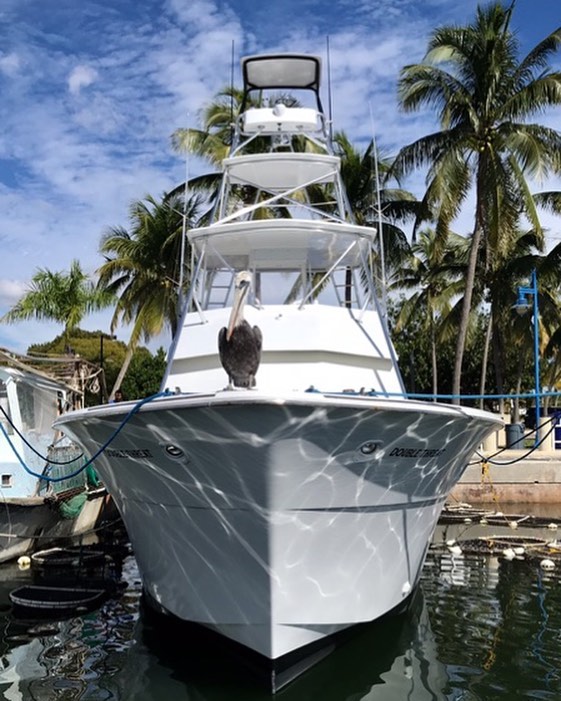 Dec 20
Dec 20History of Tuna Towers
Tuna Towers: A Modern History In the highly competitive world of offshore sport fishing, the tuna tower is just as much a status symbol as it is a necessity for those who strive to be a cut above their fellow anglers. It wasn’t until the mid 20th century that the tuna tower made it way onto the fishing scene. The tuna tower started as a crudely constructed viewing platform, fashioned with both rudimentary construction skills and supplies. They resembled more of a sailboat crow’s nest often, made with two by four lumber and just big enough to support one person. The evolution of the modern tuna tower occurred as a result of tuna fishing off Cat Cay in the Bahamas. Each year, the migratory bluefin tuna pass through the shallow reefs off Cat Cay, attracting big game anglers looking to sight fish these giants. The first bluefin tournament in Cat was held in 1939. The strip of sand adjacent Cat ...
Read More -
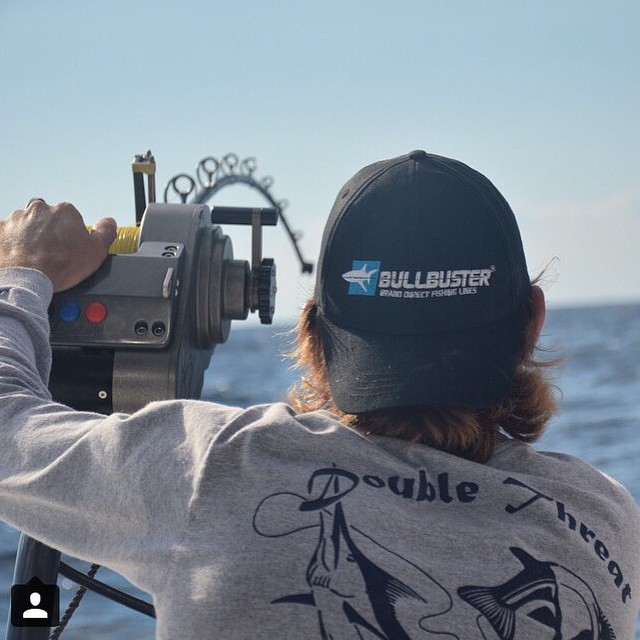 Dec 20
Dec 20Patience while Saltwater Fishing
Is Patience a Virtue? Patience and Attitude Patience and temperament are two different qualities. I think all captains benefit from remaining calm and controlling their tempers. Yelling, stomping, complaining, and making excuses do not equate to more fish in the boat. All it does is add stress without a result-oriented approach. Some of the best captains I know are well tempered but many of them are relatively impatient. Off of South Florida we have a wide variety of species we target. If your goal is to put your customers on fish, you can’t rely on one technique year round. Remaining positive and putting forth effort is important but it will only get you so far. Manage Expectations The first and most important aspect of entertaining guests while fishing is understanding and managing expectations. When I get a phone call for a trip, I like to be honest and clear about what’s biting, what is in season, how the fishing has been, etc. If someone calls me and ...
Read More -
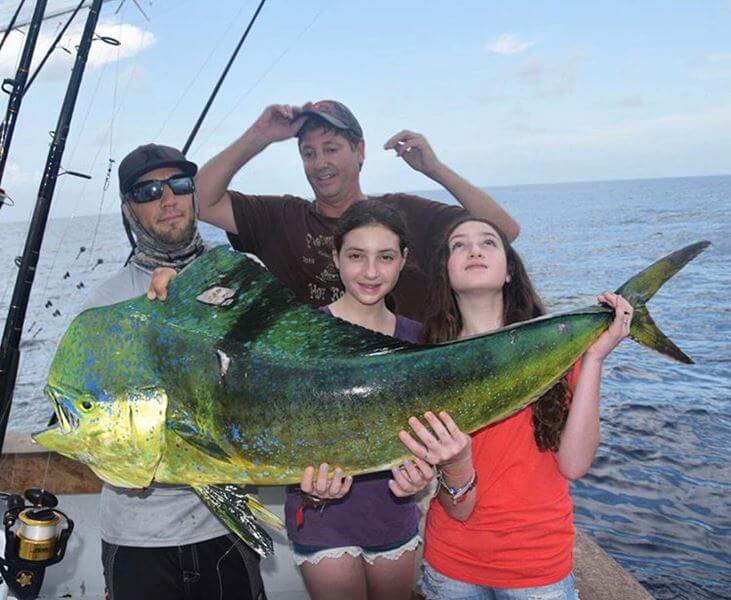 Dec 20
Dec 20Top Trolling Rigs for Mahi
Trolling rigs for Mahi There are a wide variety of trolling lures on the market. Which ones actually catch fish, and which ones are designed just to catch fisherman? Here are a few of our favorite rigs to pull when we’re targeting mahi. 1. Skirted artificial lures: These types of lures are widely available and catch a variety of fish beyond just mahi. Often times they are rigged and ready to go out of the package. We prefer the smaller sized lures, in the 4-6” range. Colors like a combination blue and white mimic flying fish, a favorite forage of dorado. Pink is also a color that seems to get a lot of bites in the spread. Some of our favorites include the R&R Mahi Magnet which can be found here https://randrtackle.com/collections/mahi-magnets. Feathers fished out of the outriggers and close to the boat will run or skip across the surface and remain relatively free of weeds. Try to position a new lure at different ...
Read More -
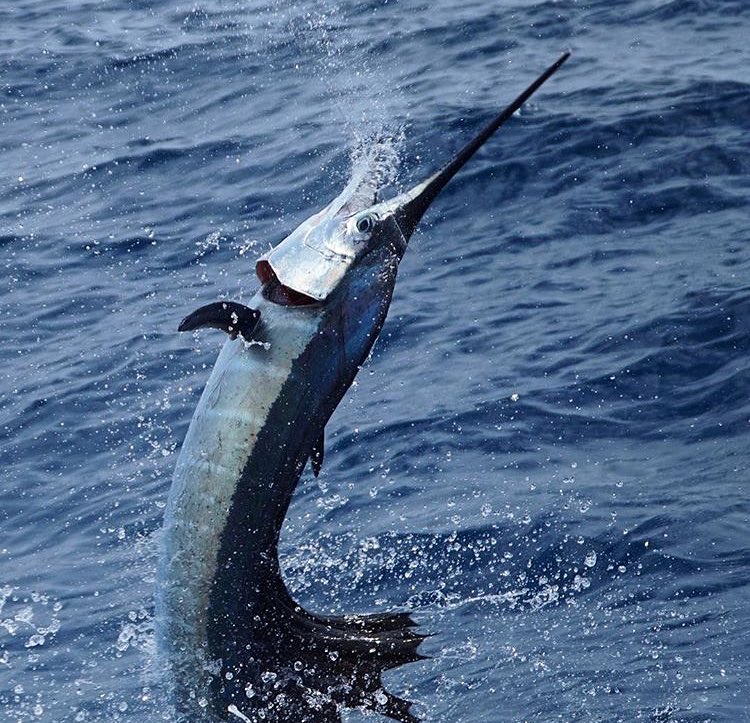 Dec 20
Dec 20Fishing Line Maintenance
Fishing Line Maintenance We run nearly 300 fishing charters per year. This puts an insane demand on our tackle, our boat, and obviously our fishing line. We have tricks to maintain and maximize the life of all of our equipment and our fishing line is no different. Here are a few tips to make sure you get long life out of your fishing line and avoid losing quality fish due to negligence. 1. Check your guides! Always monitor the condition of the guides on your rods. This is important for both spinning rods and conventional rods. Even the smallest groove or chip in a fishing guide can instantly chafe or break your mainline. Check your guides before and after every trip and be sure to avoid bad habits such as putting rods on the deck, reeling hooks into the rod tip, or placing hooks or lures onto the part of the guides where the line touches. 2. Check your clips! Kite clips and outrigger clips can be major culprits when it comes ...
Read More -
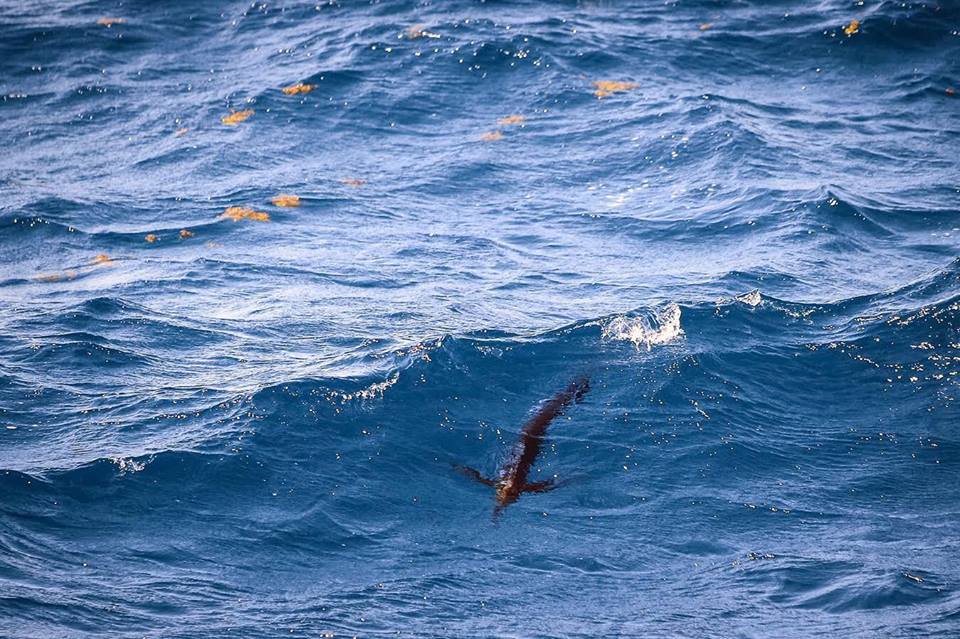 Dec 20
Dec 20Boat Maneuvering While Sight Fishing
Pick a Spread or Have no Spread At all Boat maneuvering is a crucial component of successful sight fishing. The first step in sight fishing is determining what type of spread (if any) you should have behind the boat. When dolphin fishing for example, we usually troll 4 baits out of the riggers while looking for schools of fish. If we are seeing a lot of fish or there is an excessive amount of seaweed for example, I might make the decision to have no baits behind the boat whatsoever (this is ill advised unless your boat has a tuna tower). The benefits of committing to sight fishing exclusively is that you are always ready when you see fish rather than adjusting a trolling spread that may be less effective. I usually reserve sight fishing exclusively for good conditions. Lighting, fish behavior, sea-state, and more all contribute to that decision. If you are looking for cobia on stingrays in the sand, it is usually best to have your rods ready and ...
Read More -
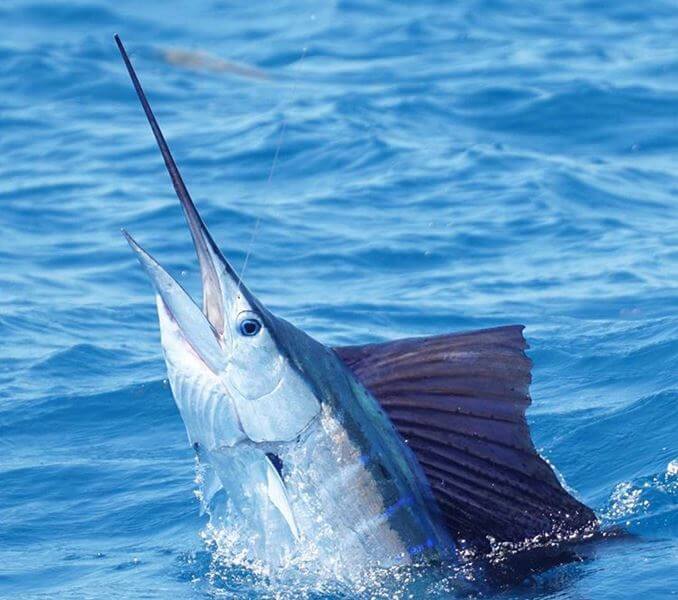 Dec 20
Dec 20Sight Fishing for Sailfish, Mahi, and More
Preparation and Presentation for Sight Fishing Sight fishing is a common technique used for many species worldwide. This is a technique we incorporate into almost any Deep Sea Fishing Trip The best way for me to breakdown sight fishing is into different categories. The first step is having the correct rig and bait, which falls under the category of preparation. The second step is boat maneuvering. The third step is presentation, which is basically casting and bait selection. The fourth step and sometimes the most important one is fish behavior/ mood. This can make or break your day. Always Be Prepared The first step when sight fishing is preparation. This is an area that you have the most control over even if you lack experience. Always have multiple rods rigged and ready. If you are fishing from a flats boat, this may only be 1 or 2 rods. One may have 20lb fluorocarbon leader, 10lb braid, and a live shrimp on the end. Bonefish might be the main target but never ...
Read More -
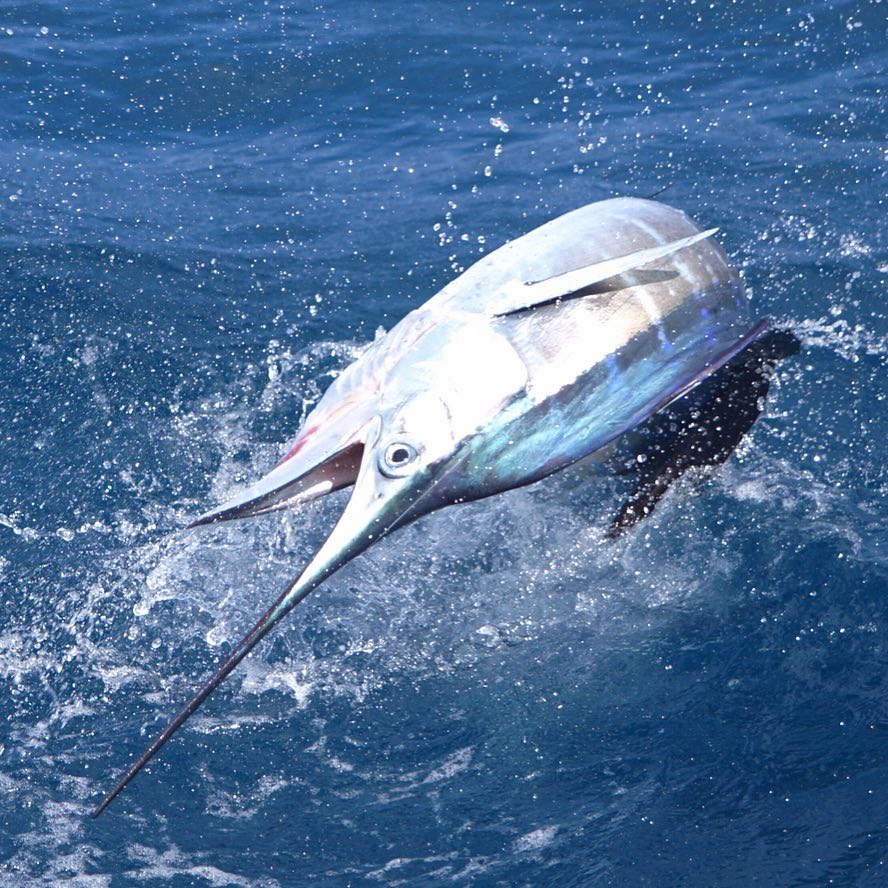 Dec 20
Dec 20How to set up a Kite Line- Clip Spacing
How to set up a Kite Line- Making Kite Marks Any serious fisherman in south Florida is going to be flying kites this winter for sailfish. This technique can also be deadly on tuna as well. If you have any intention of kite fishing, you’ll have to make a kite line. The basic kite line uses three different “marks” used to stagger three kite clips. This is established by having different size holes in each of the kite clips, each corresponding to a mark on the kite line.What do you mean by a “mark”??? The mark can be a swivel or a floss mark made with wax floss tied in a series of half hitches. The marks are designed so they are slightly larger than the hole in the kite clip. As the kite is sent away from the boat, the mark on the line leaves the reel and catches the kite clip. Most fishermen use a 3-clip system and refer to ...
Read More -
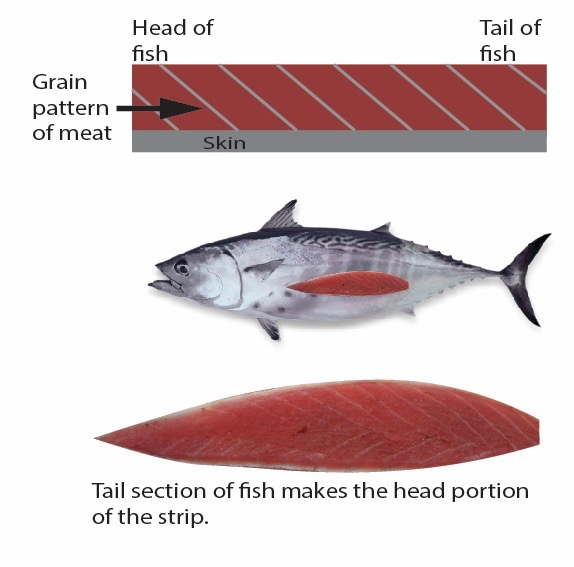 Dec 20
Dec 20Rigging Bonito Strip Baits
Making Bonita Strips for Trolling: Bonito strips are deadly tools that can bring life to a troll spread. Tough and versatile by nature, these wiggly morsels work just as well up top as they do behind a planer. Whether you are trolling or live baiting, the goal while fishing is to shoot for the most natural presentation possible. Bonito strips behind a seawitch or feather can be irresistible to a variety of species as they rip through the water column. The first step in prepping for bonito strips is the obvious: catch bonito. Bonito are ravenous little fish that can be caught on the edge from 80-200 feet of water almost year round. We catch bonito while live baiting and trolling. Bait preparation and management is crucial while charter fishing so we make sure that every bonito we catch makes it into the box and eventually our freezer. The Little Tunny or “bonita” are widely regarded as a trash fish because they are poor table fare. ...
Read More -
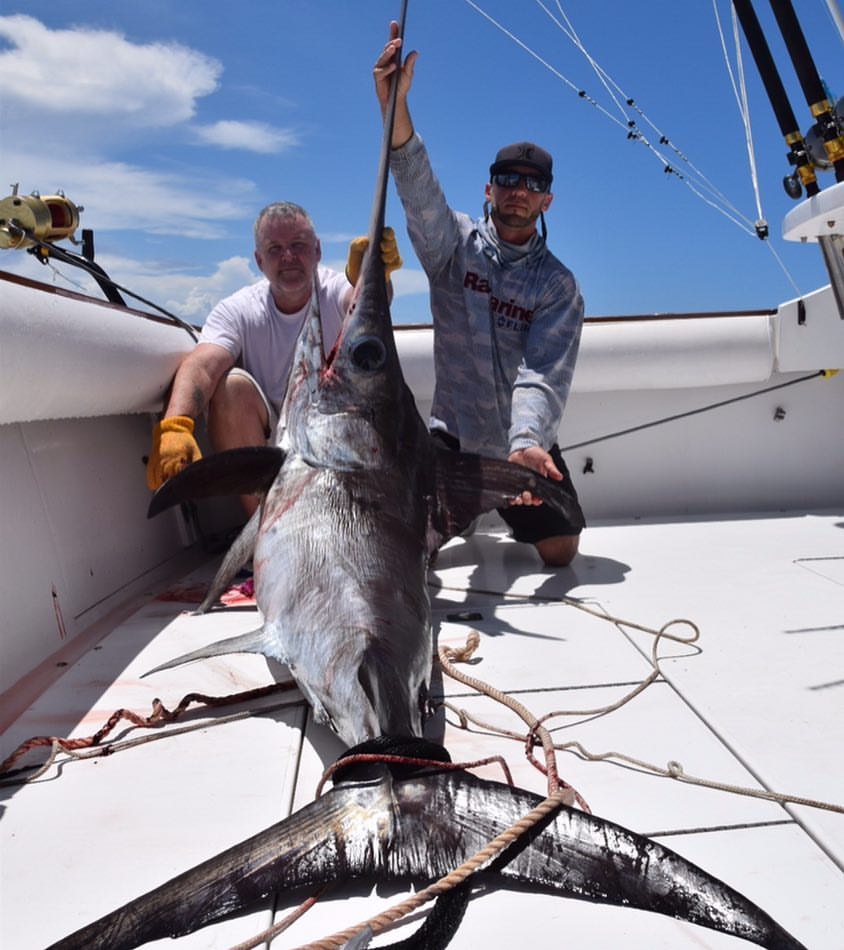 Dec 18
Dec 18Understanding the Gulf Stream
Understanding the Gulf Stream and How it Affects Fishing in South Florida The Gulf Stream is the main driving force behind our fishery in South Florida. If you drive east out of Miami, eventually you will hit the Gulf Stream and move to the north. An often over looked aspect of the Gulf Stream is that subtle changes can make or break your day of fishing. Bearing of the Gulf Stream About 18 miles offshore of Miami are a series of seamounts and valleys in 1,000-2,000 feet of water that are often referred to as the sword grounds. The Gulf Stream is almost always moving to the north offshore but the angle of the current does vary. On some days, the current is pushing hard inshore. I have seen the current move at about 350 degrees, a touch to the west of north. On other days, I have seen it move at about 20 degrees. When fishing a mile long drift, this 30-degree variation can have major consequences when trying to line up ...
Read More -
 Dec 5
Dec 5Sailfishing in Ballyhoo Showers
Sunny With A Chance Of Showers Fall and early winter in Miami gives way to a unique fishery. With sailfish beginning to make their way south toward Miami, we are presented with a variety of opportunities to target these fish. The first and more traditional method is kite fishing. No need to go into detail here; there are enough articles on kite fishing to keep you reading for days. Another fishery that not many as many anglers get to experience are known as "ballyhoo showers." Ballyhoo usually begin to infest our waters during fall and the predators are close behind. Ballyhoo are excellent bait fish and serve as a huge part of the diets for everything from Mahi-Mahi to sailfish. When ballyhoo really get thick off Miami and Ocean Reef, game fish will sometimes follows them into the shallows during their gluttonous pursuit. I have seen sailfish and even dolphin fish as shallow as 15 feet chasing schools of bait. Ballyhoo showers make a compelling case for the old ...
Read More -
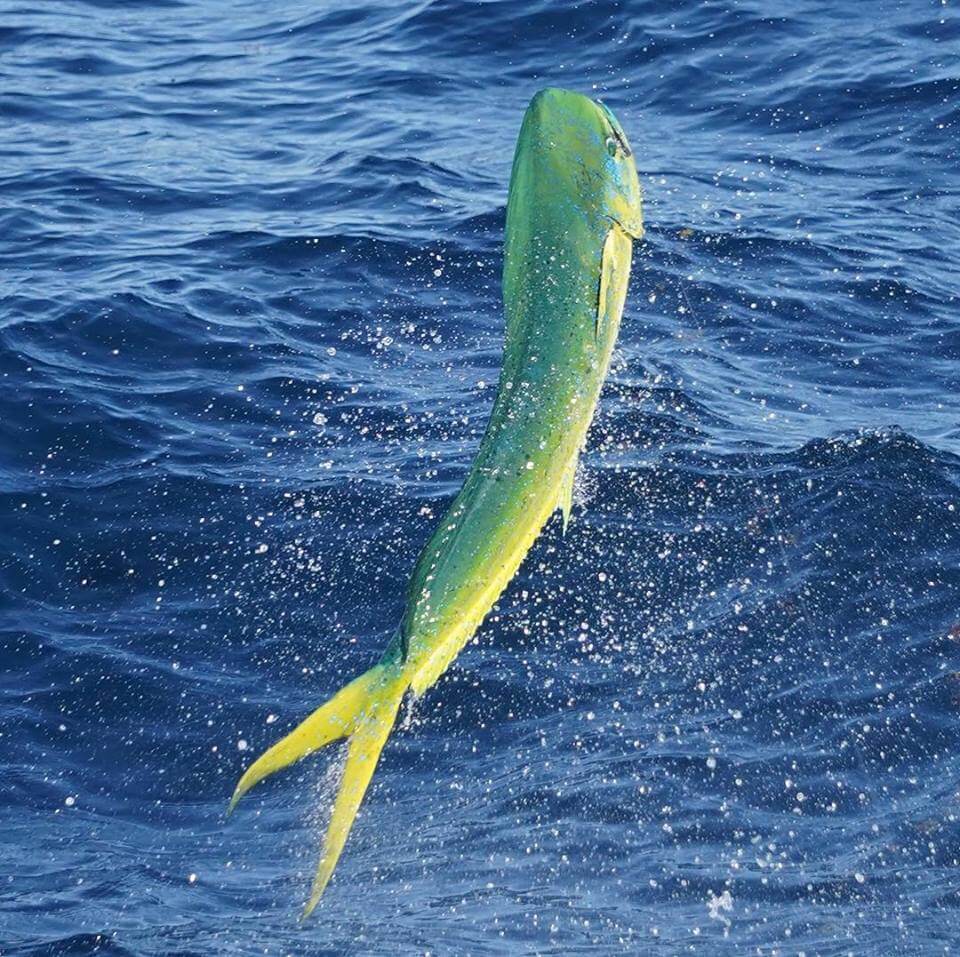 Nov 30
Nov 30November Fishing Report
November Fishing Report: Looking to get out on the water this weekend? Check out what we’ve been catching off Miami to maximize your success. The fall fishing has gotten off to a slow start, with the usual migrations of blackfin tuna, mackerel, and sailfish a little behind schedule. Don’t fear, there is still plenty of action to be found offshore if you’re willing to switch up tactics. The live bait kite fishing has been slower than to be expected, even when the optimal conditions of blue water and north current are present over the reef. Trolling has been more productive than live baiting, especially in the shallower depths. The migrations of baitfish such as ballyhoo, sardines and herring are finally starting to arrive. Predatory fish know this and are moving in shallow to capitalize on the abundance of bait. Keep an eye out for showers of ballyhoo on the oceanside flats and patch reefs. It’s not uncommon to ...
Read More -
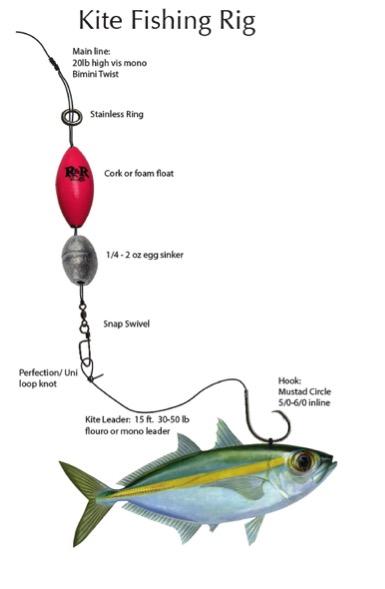 Nov 21
Nov 21Basic Kite Fishing Rig
Here are some tips and tricks to help you advance the basic kite fishing rig. First, let’s start with the basic rig.It consists of a kite leader, snap swivel, lead, cork and o-ring. If you’re new to kite fishing, the objective of kite fishing is rather simple: to fish live bait on the surface in the stealthiest way possible. Kite Fishing allows you to keep the mainline out of the water, and fish your bait right on the water’s surface. The stainless o-ring at the top of the kite rig attaches to a tension release clip on the kite line. The cork or float is used as a visual indicator, not like a fresh water bobber. Lead is used to prevent the bait from coming out of the water.Wind pressure on the main line will blow small baits out the water on high wind days. Lastly, the snap swivel allows for rapid changing of leaders. This is the ...
Read More -
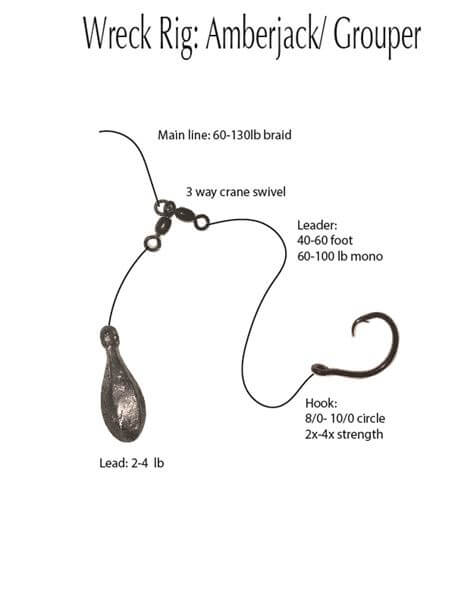 Nov 7
Nov 7Wreck Fishing Rig for Grouper and Amberjack
Wreck Fishing Rig for Grouper and Amberjack Where to fish: Looking for a grouper or amberjack to bring to the dinner table? Plenty of anglers try tackling big bottom dwelling fish with poor results. Modern marine electronics make secret spots a thing of the past. Shipwrecks, ledges and rock piles are marked on modern GPS chart plotters. There are also plenty of resources online if you’re willing to do the homework. These are the places you’ll want to fish to catch big Amberjacks, Grouper, Cobia, African Pompano, Snapper and other structure seeking fish. Shipwrecks are see more fishing pressure, and fish are getting smarter as a result. Don’t make the figurative mistake of bringing a knife to a gun fight when looking to catch big amberjack or grouper off a ship wreck. These fish will try and get back into the structure, whether it's a coral head, rock ledge, or shipwreck. Here's a great site, FloridaGoFishing lists wrecks in Florida by ...
Read More -
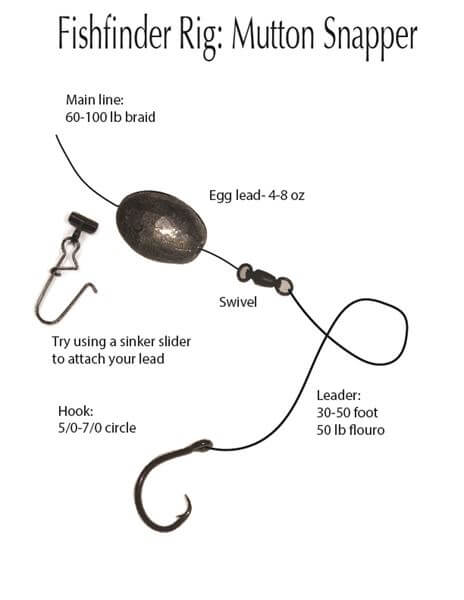 Oct 22
Oct 22Fishfinder Rig for Mutton Snapper
One of the most widely used bottom fishing rigs is the versatile fish finder rig. It can be adapted for both inshore and offshore fishing and for a variety of different species. It’s an easy rig to tie, making it a favorite for anglers. The rig consists of a weight attached to the main line followed by a swivel. An egg sinker placed on the mainline allows fish to pull line without pulling the weight of the lead. This allows game fish a swim off with the bait and swallow it before the angler sets the hook. There are sinker sliders available on the market, and they allow you to attach different sinker types through the use of a snap.Sinker sliders are ideal for surf fishing, when a pyramid type sinker is preferred over an egg sinker. They also provide a convenient attachment point for quick lead changes. Leader selection: When fishing from a boat for snapper or grouper, it’...
Read More -
 Oct 11
Oct 11October and November Fishing Report
October is a bit of a transition month off Miami with conditions changing by the day. With the tail end of dolphin season upon us, the answer to a successful trip doesn't necessarily involve punching it way offshore. In fact, some of the best fishing during October usually takes place from the edge in 100 feet of water out to 1,000 feet.A variety of factors influence where and how we fish during fall. With the summer doldrums coming to an end, we are often met with moderate east and northeast winds during the fall. In addition to an onshore flow of wind, there is usually an influx of bait on the reef in the form during this time of year. Ballyhoo, mullet, and spanish sardines, begin to amass in serious numbers and there are no shortage of predators in hot pursuit. Fishing Bait Showers Nearshore With more wind and moe bait, dolphin, tuna, kingfish, and more can all be caught shallower than 500 feet during fall. On many days, we even see ...
Read More -
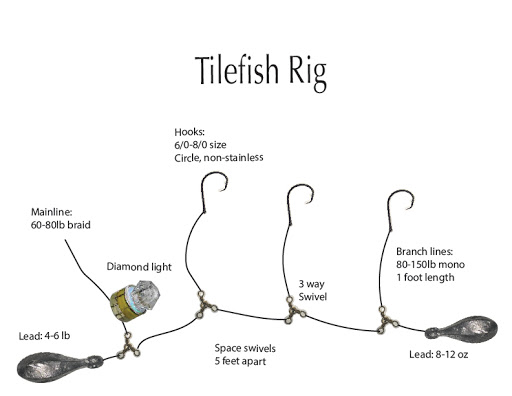 Oct 8
Oct 8Tips for Catching Golden Tilefish
Tips for Catching Golden Tilefish Off the coast of Miami, golden tilefish commonly dwell in waters ranging from 500-900 feet. They range the length of the US eastern seaboard and have been found as deep as 1,500 feet. Golden tiles look for areas with soft bottom such as clay. They make conical shaped burrows and guard them against invaders. Catching tilefish involves dropping a heavily weighted rig to the bottom with squid or fresh cut bait. The preferred rig for goldens is a “lay down rig”. This type of rig opposed to a chicken rig consists of 2 weights, with a heavier lead close to the main line and another at the end. This allows the rig to drag across the bottom, kicking up sediment along its path. Be sure to attach a high quality deep drop light to help attract fish. Catching Golden Tilefish We chose to fish or rigs on electric combos with 80 pound braid, although it’s possible to go to lighter braided lines and hand ...
Read More -
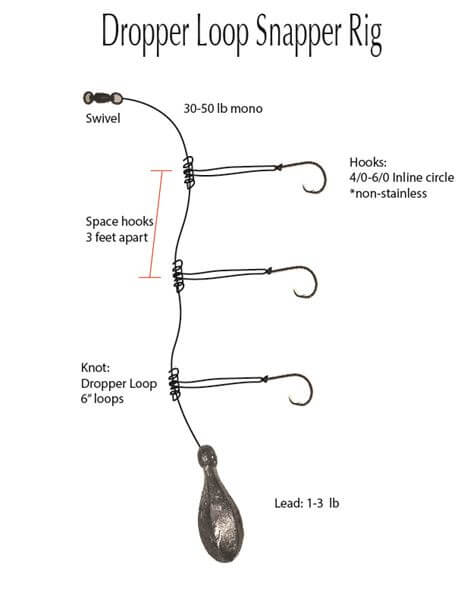 Oct 1
Oct 1Chicken Rigs for Snapper and Grouper
Deep Drop Rig for Snapper - Chicken Rig A quick and easy bottom rig to tie is the chicken rig. The rig itself consists of multiple hooks with your lead on the bottom. It presents your bait vertically in the water column, great for schooling fish suspended near the bottom. We often use them to target vermillion snapper and yellow eye snapper off Miami. My first introduction to chicken rigs was fishing for flounder off NJ. Off NJ we would tie primarily double hook rigs, spaced closer together and with longer loops. Chicken rigs work great for catching bait too, the Japanese sabiki rig is essential to anglers here in south Florida. Sabikis are essentially a miniature chicken rig. The rig itself can be used in numerous different applications and fisheries. For snapper fishing off Miami try making your rigs from 30-50 lb mono or flouro. I prefer 4 or 5 hook rigs with the hooks spaced around 3 feet apart. Dropper loop knots ...
Read More -
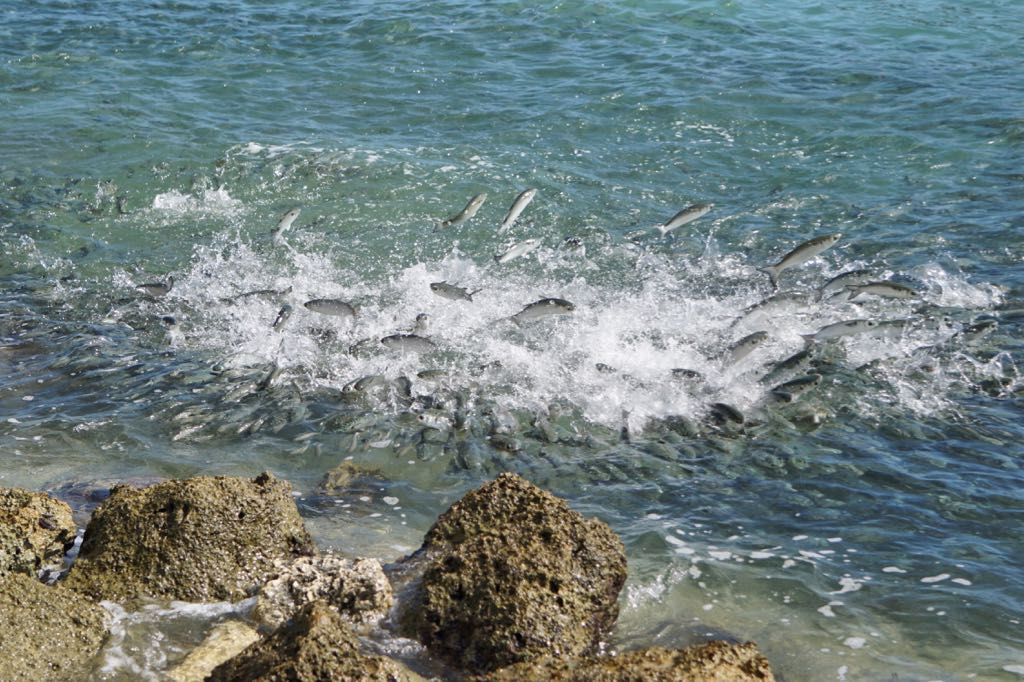 Sep 24
Sep 24Mullet Run Snook Rigs
Mullet Run Snook RigsLate summer and early fall brings about the annual mullet migration. From the Carolinas to south Florida, millions of black and silver mullet migrate down the coastline and then offshore to spawn. This massive migration is quite the spectacle to see and provides excellent opportunities for fisherman on land and at sea. Mullet are a favorite forage for snook and they are both found in brackish backwaters and tributaries. When the two species collide in massive numbers, you’ll want to be in on the action. Acre size bait schools come under attack at all hours of the day, usually peaking around the sunrise and sunset. There are a couple different ways to target snook during the mullet run, so let’s examine some different tactics and the rigs you’ll need to maximize your success. Surf Fishing: One of my personal favorite ways to target snook is on the beach during the mullet run. The bait is usually ...
Read More -
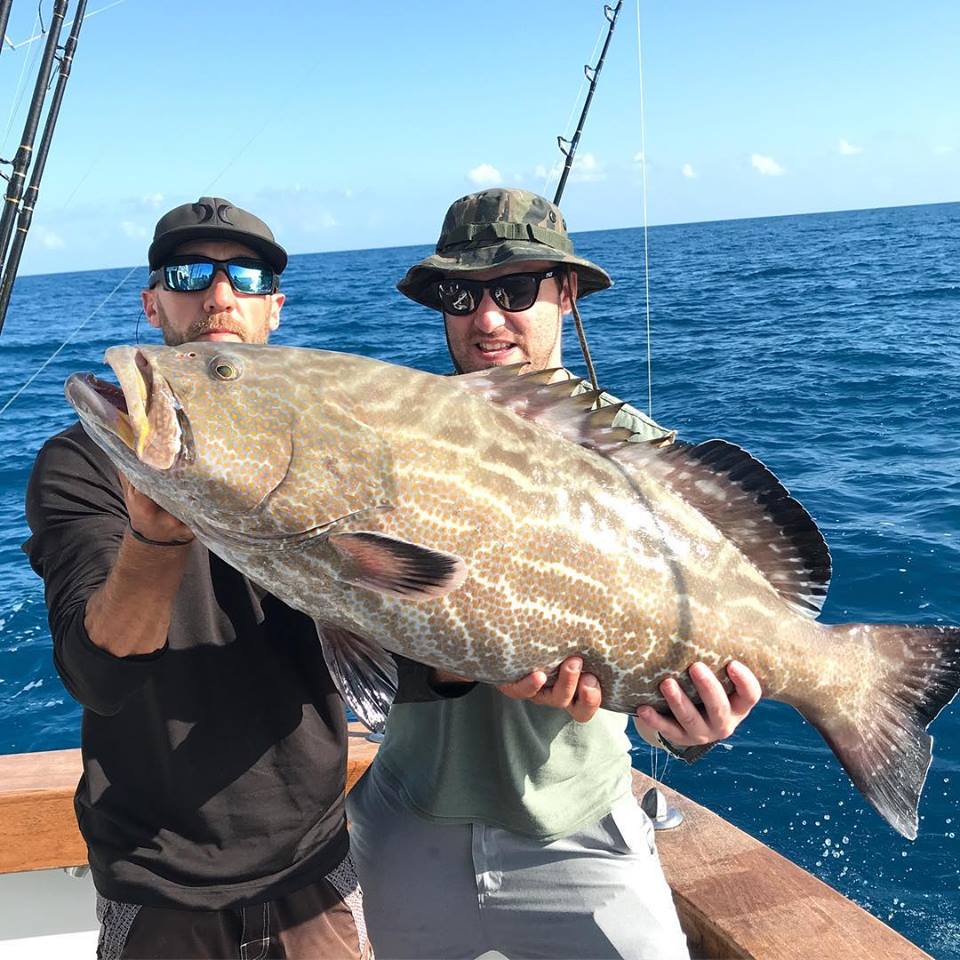 Sep 18
Sep 18Wreck Fishing Charters Miami
Shipwrecks off Miami With a big population and easy access to the water, there can be quite the crowd of fisherman offshore of Miami on any given day. Highly migratory species such as dolphin, tuna, and sailfish aren’t usually victims to local overfishing. Stocks of pelagic species can be adversely affected by commercial fishing, but the local recreational fishing pressure does little to suppress these fisheries as a whole. Bottom fish are a different story. Benthic species (bottom fish) are less migratory and don’t grow as quickly as large pelagic fish. As a result, they can be seriously affected by over fishing. Miami has a multitude of different reefs and wrecks (both natural and artificial). These wrecks create great ecosystems for baitfish and their predators to search for both food and protection. Ranging from as shallow as 25 feet to as deep as 450 feet, and running from North Miami to Key Largo, the shipwrecks off Miami are as diverse as they are abundant. The plus ...
Read More -
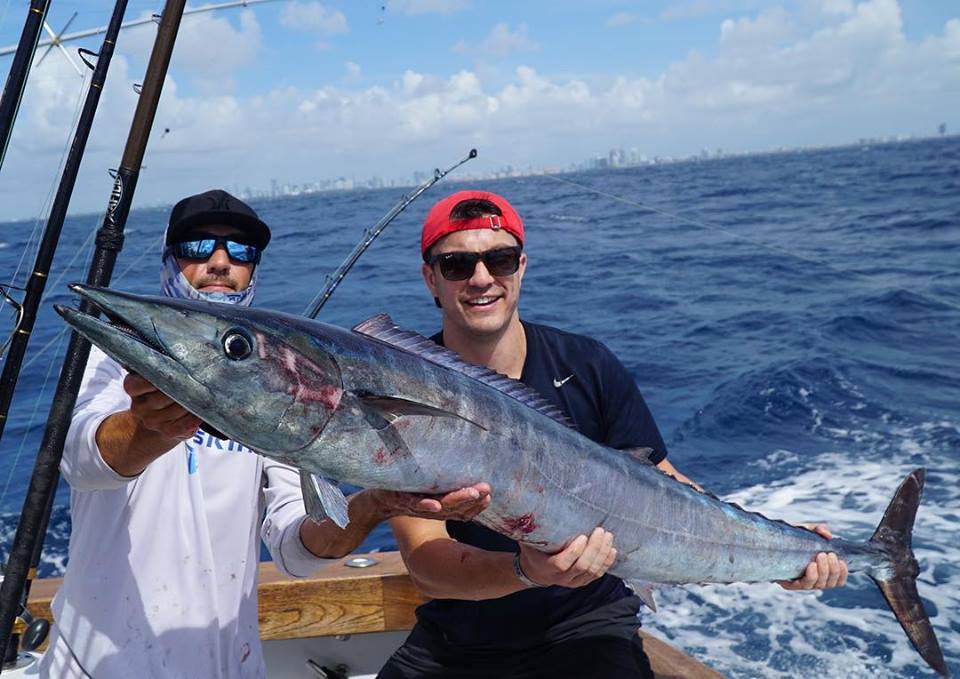 Sep 10
Sep 10Planer Fishing For Wahoo
Wahoo, A Crowd Favorite Read the Article and Buy what you need below Before reading into wahoo fishing with planers, I recommend checking out the article written about Planer Fishing Fundamentals. The rigs and techniques have some definite similarities so it helps to cover the basics. In addition, feel free to check out our species write-up on Wahoo.Unlike kingfish, wahoo have very distinct color patterns. These fish have neon blue backs and white stripes. I truly believe they have better camouflage than almost any fish. When you are bringing them to the boat they blend seamlessly into dark blue water. Until they end up on their sides and you see stripes, wahoo are tough to make out in the water. The color pattern on wahoo is important to consider because like all fish, they have a distinct niche for which they are adapted. Wahoo blend in best with dark blue water. As a result we often look for blue water and current when we are targeting wahoo. The Gulf ...
Read More




